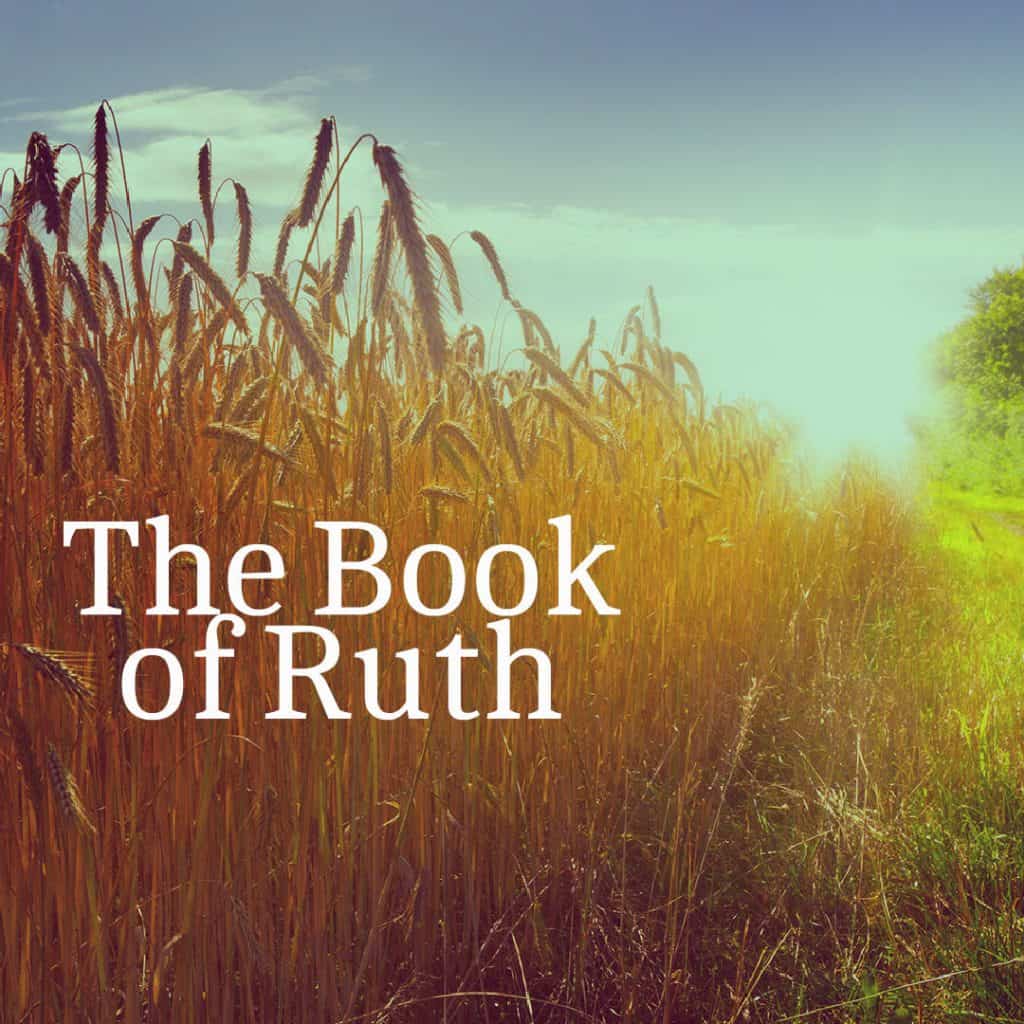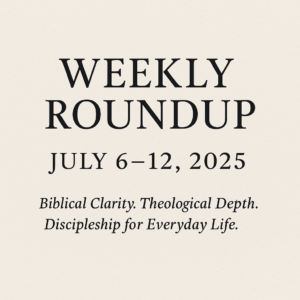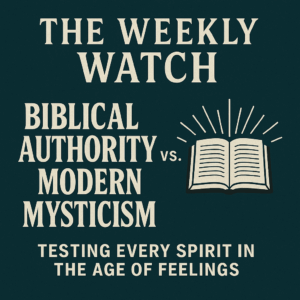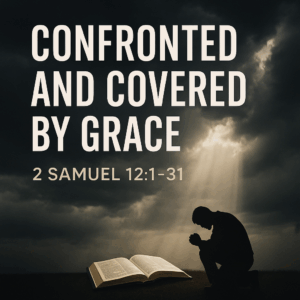⏱️ Estimated Reading Time: 10 min read
In this post, we will work our way through Ruth 2:17-23. We will be utilizing the Complete Jewish Bible translation unless otherwise noted.
Ruth 2:17-23, 17 So she gleaned in the field until evening. When she beat out what she had gathered, it came to about a bushel of barley. 18 She picked it up and went back to the city. Her mother-in-law saw what she had gleaned, and Rut brought out and gave her what she had left over after eating her fill. 19 Her mother-in-law asked her, “Where did you glean today? Where were you working? Blessed be the one who took such good care of you!” She told her mother-in-law with whom she had been working; she said, “The name of the man with whom I was working today is Bo’az.” 20 Na’omi said to her daughter-in-law, “May he be blessed by ADONAI, who has never stopped showing grace, neither to the living nor to the dead.” Na’omi also told her, “The man is closely related to us; he’s one of our redeeming kinsmen.”
21 Rut the woman from Mo’av said, “Moreover, he even said to me, ‘Stay close to my young men until they’ve finished my harvest.'” 22 Na’omi said to Rut her daughter-in-law, “It’s good, my daughter, for you to keep going out with his girls; so that you won’t encounter hostility in some other field.” 23 So she stayed close to Bo’az’s girls to glean, until the end of the barley and wheat harvests; and she lived with her mother-in-law.”
Commentary:
Ruth 2:17, “So she gleaned in the field until evening. When she beat out what she had gathered, it came to about a bushel of barley. 18 She picked it up and went back to the city. Her mother-in-law saw what she had gleaned, and Rut brought out and gave her what she had left over after eating her fill.”
The second chapter of Ruth concludes with the completion of the day’s harvesting by Ruth and her return home to speak with Na’omi regarding the rather magnificent events that had taken place to include her interaction with Bo’az. In verse 17 we find Ruth gleaning in the fields of Bo’az until evening, beating out the barley resulting in a bushel or an ephah of grain. Daniel Block notes regarding the amount gathered by Ruth that “to thresh an ephah of grain from one day’s labor is an extraordinary feat, not to mention Ruth’s having to carry it home!”[1] It is apparent that the instructions given by Bo’az to his workers to leave extra portions of grain along the way for Ruth to gather resulted in this bounty. Huey comments “Since the ration of a male worker in ancient Mari was about one to two pounds of grain per day, Ruth probably gathered enough to last Naomi and her for several weeks.”[2]
With Ruth returning home with this large provision of food, it is no wonder the conversation between her and Na’omi took place that is recorded in the following verses. Something indeed was taking place of a rather miraculous invention, again driving home an underlying theme in the Book of Ruth of God’s provision for His people, in this case evidenced through the kindness of Bo’az to Ruth.
Ruth 2:19-22, “Her mother-in-law asked her, “Where did you glean today? Where were you working? Blessed be the one who took such good care of you!” She told her mother-in-law with whom she had been working; she said, “The name of the man with whom I was working today is Bo’az.” 20 Na’omi said to her daughter-in-law, “May he be blessed by ADONAI, who has never stopped showing graace, neither to the living nor to the dead.” Na’omi also told her, “The man is closely related to us; he’s one of our redeeming kinsmen.” 21 Rut the woman from Mo’av said, “Moreover, he even said to me, ‘Stay close to my young men until they’ve finished my harvest.'”
22 Na’omi said to Rut her daughter-in-law, “It’s good, my daughter, for you to keep going out with his girls; so that you won’t encounter hostility in some other field.”
Verses 19-22 reveal the discussion that takes place between Ruth and N’aomi and Ruth recounts what had taken place to include her interaction with Bo’az and the care he extended towards her. Na’omi understandably displays great wonder and bewilderment at the large amount of grain Ruth returns home with, likely due to her expectation that gleaning from the edges of the field would provide a mere subsistence living for her and her daughter-in-law.
Block notes an interesting element of the verb structure in verse 19, commenting “By our standards the verbs are illogically sequenced, but the order and the redundancy combine to reflect her utter amazement on Ruth’s productivity. But she is not really interested in the geographical location of the field. Before Ruth can answer, Naomi breaks out in a spontaneous utterance of blessing upon the man who had taken notice of her daughter-in-law.”[3] This response by Na’omi represents a shift in her overall attitude towards life, namely a movement from sheer and utter depression to the point where she asks to be called “Marah” (bitterness) to include the understandable questioning of God’s motives towards her and her family to this situation, where God’s oversight and provision for them has become apparent.
The aspect of Hesed is once again revealed as an underlying theme in this book as Na’omi expresses her understanding of God’s grace being bestowed upon them through Bo’az. Younger states “The Hebrew text contains two grammatical ambiguities that have fueled scholarly debate over the meaning of the text…It may be that the ambiguity is deliberate in order to stress that both Boaz and Yahweh (through Boaz) have shown Hesed, that is, compassionate, covenantal loyalty, kindness, goodness, and love toward the widows.”[4] In recognition of this compassion, Na’omi gives praise to God for His goodness through the man Bo’az noting something very important, namely that God had never stopped extending His gracious hand, again a turn of events in her overall attitude in comparison to the previous passages where depression and lack of understanding ruled the day.
In the ending section of verse 20, Na’omi mentions that Bo’az is “one of their redeeming kinsman”, also described as a kinsman redeemer. The subject of the kinsman redeemer is one that we will discuss in detail in our next post so we will not examine at this time what that means or the overall importance of the kinsman redeemer to the story of Ruth other than to make note of this important concept as it presents itself in this verse. As noted by Younger, “Noami’s revelation of Boaz’s relationship to them is important to the plot because it creates anticipation of events to come.”[5]
Ruth responds to Na’omi’s declaration of praise to God by adding the command by Bo’az to her to “Stay close to my young men until they’ve finished my harvest.” An interesting element of verse 20 is the reminder provided to the reader by the narrator that Ruth is a Moabitess, perhaps in an effort to stress yet again that Ruth is a foreigner and also to set the stage for the interesting climax to this story that is yet to unfold, specifically the kinsman redemption by an Israelite of a foreigner. Block suggests “the narrator may hereby be deliberately reflecting a clash of cultures. Naomi’s reference to Boaz as a go’el makes sense only within the context of Israel’s unique theology of family and land. As a Moabite, Ruth may not have grasped the significance of Naomi’s statement.”[6] Nonetheless, Na’omi apparently grasped the enormity of the situation as evidenced by her response to Ruth’s recounting of the day’s events.
Recognizing what was taking place, Na’omi instructed Ruth to continue gleaning in the fields of Bo’az and to take heed to the instructions Bo’az had given her lest she encounter hostility in another field. Huey avers that Na’omi “was aware that a woman of Ruth’s status could meet with harm if she worked alone in other fields.”[7] God was at work through Bo’az and Na’omi was becoming fully aware or at least noting that a significant turn of events was taking place.
Ruth 2:23, “So she stayed close to Bo’az’s girls to glean, until the end of the barley and wheat harvests; and she lived with her mother-in-law.”
Ruth 2:17-23 concludes with the simple statement that Ruth followed the instructions of Na’omi and continued to stay close to the workers of Bo’az, gleaning from his fields until the conclusion of the barley and wheat harvests, furthermore living with No’ami during that period. Block notes that based on information found in the Gezer agricultural calendar, “Ruth must have been out in the fields for six to seven weeks, from late April till early June by our designations of the months.”[8]
Also interesting is the lack of any further interaction noted by the narrator between Ruth and Bo’az. All that is noted is Ruth “clinging to” the workers of Bo’az and the keeping of her oath to Na’omi to live with her mother-in-law, all signifying that the characters in this story at this point were settling into somewhat of a predictable daily routine of life. Still remaining is the issue of Na’omi and Ruth, in particular of whether issues beyond mere sustenance will be addressed such as the continuance of the house of Elimelech. With that said, the stage has been set for
redemption and restoration to break forth. The question that lingers is whether Bo’az is that redeemer.
Conclusion:
This section of Ruth, although short and arguably not as full of action as previous portions of this book, is nevertheless an important transition in the story. The kindness expressed towards Ruth and in turn Na’omi has things looking up for these two widows. Add to that the reality of Bo’az being one of the possible kinsman redeemers and we have yet again a movement towards the theme of redemption found throughout this book with that theme continually moving towards the stories ultimate climax and conclusion.
In our next post, we will take a break from examining Ruth itself to spend some time looking at what exactly this kinsman redeemer concept is all about and why it is so important to the story of Ruth. Following that examination, we will return to the Book of Ruth looking at Ruth 3:1-5.
References:
[1] Daniel Block, The New American Commentary: Judges-Ruth (Nashville: B&H Publishing Group, 1999), 670.
[2] F. B. Huey, Jr. “Commentary on Ruth” in The Expositor’s Bible Commentary, Vol.3: Deuteronomy through 1&2 Samuel. Edited by Frank Gaebelein. Grand Rapids: Zondervan, 532.
[3] Block, 671.
[4] K. Lawson Younger, Jr. NIV Application Commentary: Judges-Ruth (Grand Rapids: Zondervan, 2002), 449.
[5] Ibid.
[6] Block, 676.
[7] Huey, 533.
[8] Block, 677.




